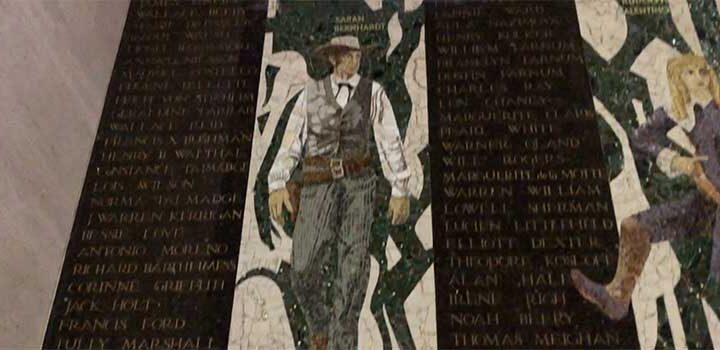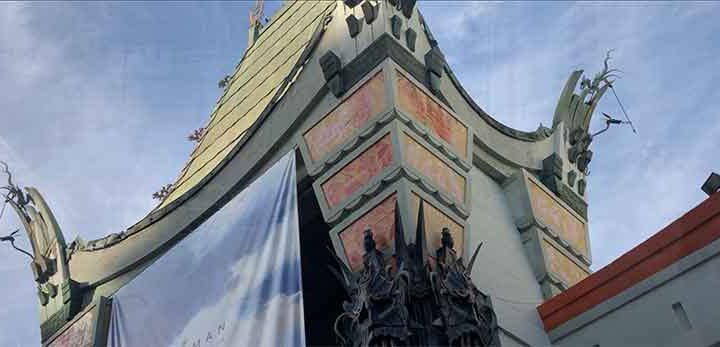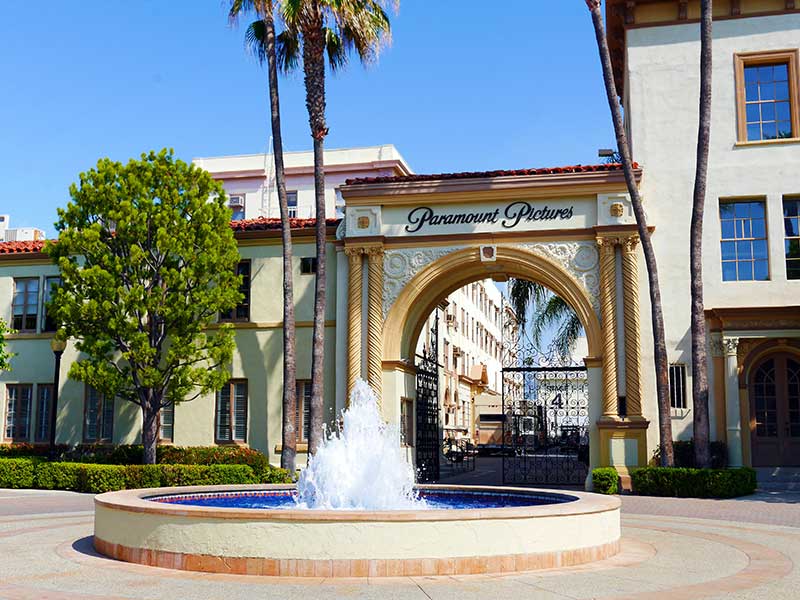Tour the Hollywood Bowl
No tour of Hollywood, CA would be complete without viewing the Hollywood Bowl. However, just across Highland Ave. from the Bowl sits Jesse Lasky’s old studio, the site of one of the first (silent) feature films ever made.
The Hollywood Bowl, an iconic and historic amphitheater nestled in the Hollywood Hills of Los Angeles, stands as a testament to the rich cultural heritage of the entertainment industry. Since its grand opening in 1922, the Hollywood Bowl has evolved into a symbol of musical excellence and a beloved cultural landmark. With its unique shell-shaped design, breathtaking views, and a seating capacity exceeding 17,000, the Bowl has become one of the world’s largest natural amphitheaters, hosting a diverse array of performances that span genres and generations.
The Hollywood Bowl owes its creation to the vision of two women, Christine Wetherill Stevenson and Artie Mason Carter. Their dream was to establish a venue that would serve as a community gathering space for music and the arts. In 1919, they convinced the newly formed Theatre Arts Alliance to invest in an outdoor amphitheater. The original site chosen was a natural amphitheater in Bolton Canyon, but it proved unsuitable due to its remote location and challenging accessibility. The search for a new location led to the iconic spot in the Hollywood Hills, known for its panoramic views of the city.
Architect Frank Lloyd Wright was initially approached for the project, but the collaboration did not come to fruition. Instead, the renowned Southern California architect Lloyd Wright, son of Frank Lloyd Wright, joined forces with designer C. E. Christison to create the distinctive shell design that has become synonymous with the Hollywood Bowl. The concentric arches of the shell, initially constructed with wooden slats, aimed to enhance acoustics and create a visually striking backdrop for performances.

Hollywood Bowl tour on Highland Ave.
On July 11, 1922, the Hollywood Bowl officially opened its gates to the public with a performance by the Los Angeles Philharmonic. The inaugural season was marked by enthusiasm and success, setting the stage for the Bowl’s future as a premier entertainment venue. Over the years, the venue underwent several renovations and expansions to accommodate the growing demand for its unique offerings.
One of the defining features of the Hollywood Bowl is its association with the Los Angeles Philharmonic, one of the most prestigious orchestras globally. The Philharmonic became the resident ensemble in 1922, and its performances at the Hollywood Bowl have become a cherished tradition, particularly during the summer season. The summer concerts are a highlight, drawing crowds from around the world who come to experience the magic of open-air performances under the starlit Southern California sky.
The Hollywood Bowl’s programming extends far beyond classical music, embracing a diverse range of genres and artists. From legendary rock bands to pop icons, jazz maestros to Broadway sensations, the Bowl has hosted an impressive array of performers. The venue’s adaptability and commitment to inclusivity have allowed it to remain relevant across generations, consistently attracting both seasoned music enthusiasts and new audiences eager to explore the world of live performances.
The summer “Hollywood Bowl season” is a focal point of the venue’s calendar, featuring a variety of series and events. The classical music series often showcases world-renowned conductors and soloists, making the Hollywood Bowl a destination for classical music aficionados. The “Jazz at the Bowl” series highlights the genre’s luminaries, bringing together jazz enthusiasts for memorable evenings of improvisation and rhythm. Additionally, the venue hosts film nights, where orchestras perform live scores to accompany classic films, enhancing the cinematic experience.
The Hollywood Bowl is not just a concert venue; it is an immersive cultural experience. Its setting in the Hollywood Hills offers patrons stunning views of the Los Angeles skyline, creating a unique backdrop for performances. The iconic Hollywood Sign serves as a silent observer, adding to the allure of the venue. The casual and convivial atmosphere encourages attendees to bring picnics and enjoy pre-concert meals on the grounds, creating a communal ambiance that distinguishes the Hollywood Bowl from traditional concert halls.
Over the years, the Hollywood Bowl has seen its fair share of historic moments and legendary performances. The Beatles played to a sold-out crowd in 1964 during their first U.S. tour, leaving an indelible mark on the venue’s history. Frank Sinatra, Ella Fitzgerald, and Nat King Cole are among the luminaries who have graced the Bowl’s stage, contributing to its legacy as a platform for musical greatness.
In addition to its musical significance, the Hollywood Bowl has become a prominent location in the film and television industry. Its distinctive architecture and scenic surroundings have made it a popular choice for filmmakers and producers seeking an iconic backdrop. The Bowl has appeared in numerous films, including the classic “A Star is Born” (1954) and more contemporary productions like “La La Land” (2016), further solidifying its place in the cultural tapestry of Los Angeles.
The Hollywood Bowl’s commitment to accessibility and community engagement extends to its educational initiatives. The venue hosts educational programs, including the “Hollywood Bowl Orchestra Toyota Symphonies for Youth,” which introduces young audiences to the world of classical music. These programs aim to cultivate the next generation of music enthusiasts and ensure that the cultural legacy of the Hollywood Bowl endures for years to come.
While the Hollywood Bowl has undergone various renovations and improvements over the decades, including the addition of a modern sound system and upgraded amenities, its commitment to preserving its historical charm remains unwavering. The wooden shell, though reinforced with steel in later renovations, maintains its iconic design, creating an aesthetic continuity that bridges the past and the present.
In conclusion, the Hollywood Bowl stands as a symbol of musical diversity, cultural vibrancy, and artistic innovation. From its humble beginnings in the Hollywood Hills to its current status as a global entertainment destination, the Bowl has evolved into a cultural institution that transcends genres and captivates audiences of all ages. Its unique blend of natural beauty, architectural splendor, and world-class performances has solidified its place as an enduring icon in the heart of Los Angeles, a city that continues to be shaped by the magic of the Hollywood Bowl. Whether you’re a classical music enthusiast, a devoted jazz fan, or someone simply seeking an unforgettable night under the stars, the Hollywood Bowl offers a timeless and enchanting experience that celebrates the power of live music and the enduring spirit of entertainment.
Jesse Lasky’s Studio
Jesse Lasky, a pioneering figure in the early American film industry, left an indelible mark on Hollywood as a visionary producer and studio executive. Born on September 13, 1880, in San Francisco, California, Lasky embarked on a career that would help shape the trajectory of the burgeoning film industry in the early 20th century. His contributions as a co-founder of Famous Players-Lasky Corporation (later Paramount Pictures) and his role in producing groundbreaking films solidified his legacy as a key architect of Hollywood’s golden age.
In the early 1900s, as the film industry began to take shape, Jesse Lasky ventured into theatrical production. Alongside his brother-in-law, Samuel Goldfish (who later became Samuel Goldwyn), and Cecil B. DeMille, Lasky founded the Jesse L. Lasky Feature Play Company in 1913. This collaboration was a crucial step in Lasky’s career, setting the stage for the formation of Famous Players-Lasky Corporation in 1916.
Famous Players-Lasky was a pioneering venture, representing a merger of the theatrical experience brought by Lasky, the creative direction of DeMille, and the financial acumen of Adolph Zukor. Zukor, the head of Famous Players Film Company, joined forces with Lasky and DeMille, forming a powerful conglomerate that would later evolve into Paramount Pictures. The studio, based in Hollywood, became one of the major players in the American film industry during its formative years.
Under Lasky’s leadership, Famous Players-Lasky became known for producing high-quality and commercially successful films. One of the early triumphs was the 1914 production of “The Squaw Man,” directed by Cecil B. DeMille. It was the first feature film shot in Hollywood and marked the beginning of Hollywood’s ascent as the epicenter of the film industry. The success of “The Squaw Man” laid the groundwork for subsequent ventures, including the establishment of a studio in Hollywood by the Famous Players-Lasky Corporation.
Jesse Lasky’s foresight in recognizing the potential of Hollywood as a filmmaking hub played a pivotal role in shaping the industry’s geography. Hollywood, with its favorable climate and diverse landscapes, emerged as an ideal location for year-round film production. The Hollywood studio system, as we know it today, owes much to the early visionaries like Lasky, who saw the potential of this small community nestled in the hills of Los Angeles.
In 1917, Famous Players-Lasky became Paramount Pictures Corporation, a name synonymous with cinematic excellence. The studio thrived under Lasky’s guidance, producing a string of successful films and contributing significantly to the growing popularity of the American film industry. Lasky’s knack for recognizing talent and fostering creative collaboration was evident in his partnerships with directors like DeMille and actors such as Gloria Swanson.
One of the landmark films produced by Jesse Lasky was “The Ten Commandments” (1923), directed by Cecil B. DeMille. This biblical epic was a massive undertaking, showcasing the grandeur and spectacle that would become synonymous with DeMille’s later works. “The Ten Commandments” not only solidified DeMille’s reputation as a master filmmaker but also demonstrated Lasky’s willingness to invest in ambitious and groundbreaking projects.
As a studio executive, Lasky played a crucial role in navigating the film industry through its formative years. The transition from silent films to “talkies” presented a significant challenge for studios, but Paramount, under Lasky’s leadership, successfully adapted to the changing landscape. The studio produced notable early sound films, including “Wings” (1927), which won the first Academy Award for Best Picture.
Jesse Lasky’s commitment to innovation extended beyond technological advancements. He recognized the importance of storytelling and the need for engaging narratives to captivate audiences. Under his guidance, Paramount Pictures continued to produce films that resonated with viewers, showcasing a diverse range of genres and styles.
Despite his contributions to the film industry, Lasky faced challenges as well. The economic downturn of the Great Depression in the 1930s had a profound impact on the entertainment business. The studio system underwent significant changes, and many studios faced financial difficulties. Paramount, too, had to navigate the economic challenges of the era.
In 1933, Jesse Lasky left Paramount Pictures, marking the end of an era. However, his legacy endured, and the studio continued to thrive under new leadership. Lasky’s impact on the Hollywood landscape was not confined to his time at Paramount. His contributions helped establish Hollywood as the entertainment capital of the world and laid the foundation for the modern film industry.
After leaving Paramount, Lasky continued to be involved in various aspects of the entertainment industry. He worked as an independent producer and contributed to the production of several films. His son, Jesse Lasky Jr., also went on to have a successful career as a screenwriter.
Jesse Lasky passed away on January 13, 1958, leaving behind a legacy that continues to influence the film industry. His pioneering spirit, commitment to quality filmmaking, and role in shaping Hollywood’s identity have earned him a lasting place in the annals of cinema history. The Hollywood of today, with its iconic studios, legendary filmmakers, and global impact, owes much to the visionaries like Jesse Lasky who laid the groundwork for the industry’s ascent to cultural prominence.















